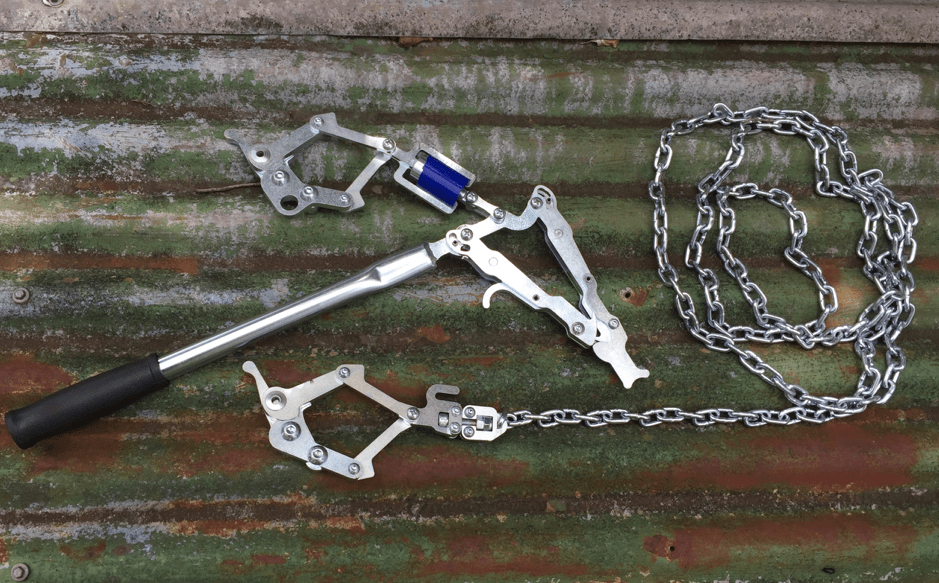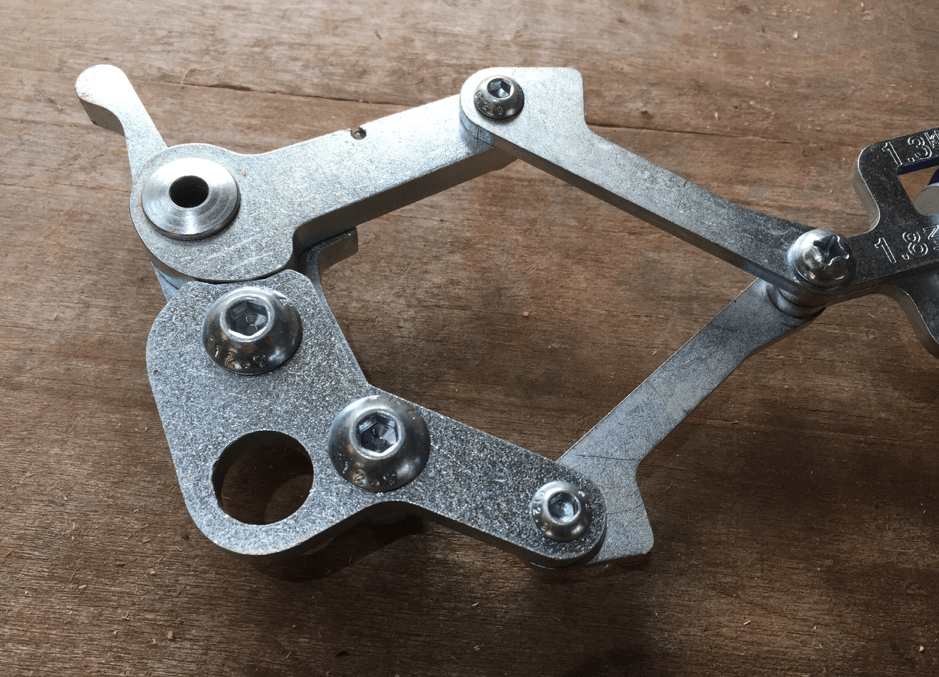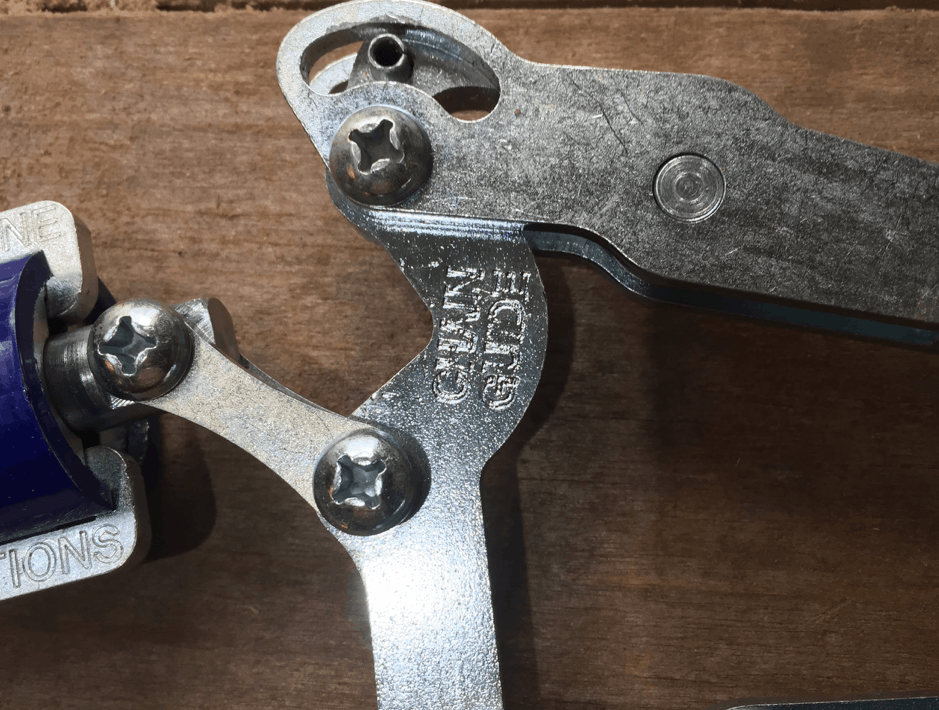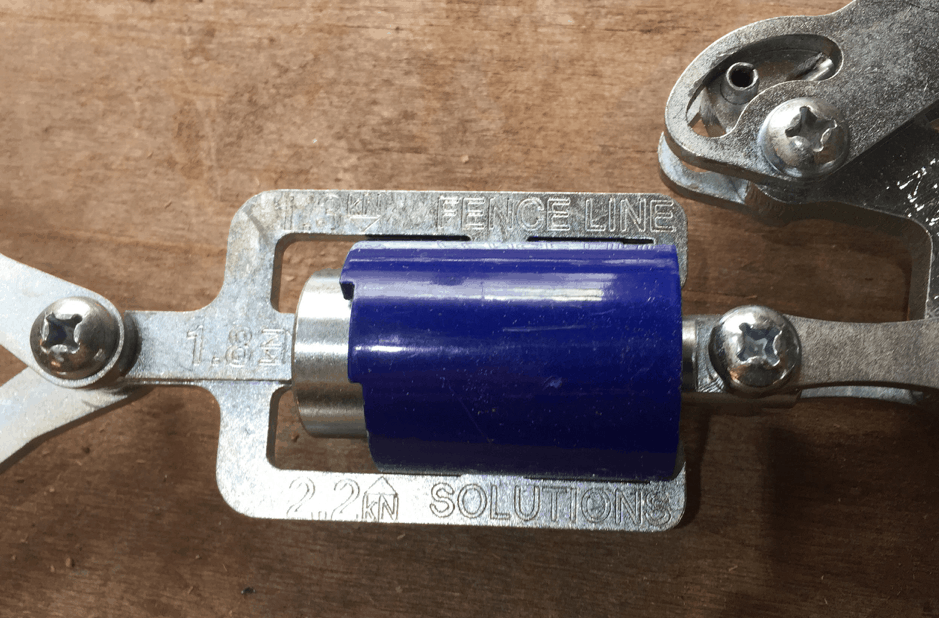Fenceline Strainers – A Game Changer?

There is an old saying that “There is nothing new under the sun” and while I don’t completely prescribe to this, certainly most tools we use are a natural development of an existing tool. Every now and then though, one comes along with enough new ideas and innovation to completely revolutionise a tool. The Fenceline strainer is a game changer.

These new strainers are still based around levers on a chain. This is a system that certainly in Australia, has been dominated by the Hayes design and copied by many others for over a century. But it improves and adds so many features to the workflow that I think it’s revolutionary. The spring loaded cam and anvil, similar to the old Donald strainers invented in the 1890’s, mean that your hands never go near the wire. The jaws lock positively to the wire even when they are not under tension. The juggle to attach strainers and the chain falling off the wire are a thing of the past. The ‘triggers’ on the cantilevers at each end, mean that there is no effort whatsoever when attaching them to wire.

Debates over wire tension are a thing of the past. With a tensiometer included in the actual straining assembly, muscle memory is not needed. The danger of over tensioning wire is avoided and sloppy fences from slack wire are a distant memory. I was a bit concerned that the tensiometer might become inaccurate over time, but apparently it’s rated to 350,000 cycles. If I ever get to that many uses I’ll ask my nurse in the home to get me a new set.

Three seemingly simple design features leave me scratching my head and wondering why they were never thought of before. A simple change to the anvil allowing attachment to straining plates makes straining sheep mesh so simple and safe. It also removes the risk of damage to the anvil that attaching strainers directly to hooks creates. At the other end, there is a hook that stops the terrible habit of looping the chain through the cantilevers to wrap around posts. This prevents damage that can cause safety issues and reduce the life of the tool. Finally we get to the chain guide. The simplest and most profound change of all. A simple bend in the main lever arm, between the pawls that grip the chain, creates a guide that prevents fouling during use. Seemingly simple, this single modification increases the safety of the strainers by removing the need for hand contact. It also makes using the strainers fast and efficient, requiring only one hand to operate.

Yep, these strainers are the result of hours of thought and careful design. They are truly a game changer. Now I can’t wait to see how the industry responds. I have a feeling that these have set a new benchmark. One that will be the first in a new series of many amazing strainer designs to come.
13 Comments on “Fenceline Strainers – A Game Changer?”
Loving your reviews and guidance across quite a few different farm topics.
Would be great for you to mention a couple of times (start and end) the names of products and if good, where to find a stock eat listing.
Keep up the good work!
From a noobie farmer
Adrian
Cheers mate. Always have links to all my reviewed products on timthompson.ag Glad you enjoy the videos!
I am going to get a set of these
Hi my name is Tim from Ireland
Would love to buy the fence line strainer
Would you be able to send me the address or email address to where I can purchase them that will send overseas thanks
Love your fencing tips and your vast knowledge of the game
https://www.fencelinesolutions.com.au/
How much are the strainers with the tention indicator
I have used my Hayes strainers for many, many, years, and they are a good strainer. However, I invested in these Fenceline strainers a couple of years ago (before I was aware of your videos). My main reason for replacing the Hayes was the incorporated tension guage which is much more practical than a separate guage. The other, thoughtful and practical design changes are a bonus. In my opinion, the strainers are a must for a novice fencer and worth the investment. You will be doing yourself a favour by shelling out the extra dollars.
Where can you get them from ?
https://www.fencelinesolutions.com.au/
Good day mate scooter Richters how would i be able to buy a set of the strainers you got email address is [email protected] thanks
https://www.fencelinesolutions.com.au/
Where can you buy a set of these strainers from?
https://www.fencelinesolutions.com.au/